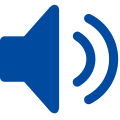Sign or Symptom
tremor

trem·or [ trem-er, tree-mer ]
Subclass of:
Dyskinetic syndrome
Etymology:
Latin tremere = to tremble
Tremens comes from the same source, but has acquired a special use in delirium tremens, or the shaking delirium of alcoholism.
Tremens comes from the same source, but has acquired a special use in delirium tremens, or the shaking delirium of alcoholism.
Definitions related to tremor:
-
A rhythmic, quivering movement of muscles that can be caused by diseases such as Parkinson disease, side effects of medication, or old age.Harvard Dictionary of Health TermsHarvard Medical Publishing, 2011
-
An unintentional, oscillating to-and-fro muscle movement about a joint axis.Human Phenotype Ontology (HPO)The Human Phenotype Ontology Project, 2021
-
Cyclical movement of a body part that can represent either a physiologic process or a manifestation of disease. Intention or action tremor, a common manifestation of CEREBELLAR DISEASES, is aggravated by movement. In contrast, resting tremor is maximal when there is no attempt at voluntary movement, and occurs as a relatively frequent manifestation of PARKINSON DISEASE.NLM Medical Subject HeadingsU.S. National Library of Medicine, 2021
-
Involuntary trembling or quivering.CRISP ThesaurusNational Institutes of Health, 2006
-
The shaking movement of the whole body or just a certain part of it, often caused by problems of the neurons responsible for muscle action.NCI ThesaurusU.S. National Cancer Institute, 2021
-
Unintentional trembling or shaking of one or more body parts.NICHD Pediatric TerminologyU.S. National Cancer Institute, 2021
-
A tremor is a rhythmic shaking movement in one or more parts of your body. It is involuntary, meaning that you cannot control it. This shaking happens because of muscle contractions. A tremor is most often in your hands, but it could also affect your arms, head, vocal cords, trunk, and legs. It may come and go, or it may be constant. Tremor can happen on its own or be caused by another disorder. There are several types of tremor, including Essential tremor, sometimes called benign essential tremor. This is the most common type. It usually affects your hands, but it can also affect your head, voice, tongue, legs, and trunk.; Parkinsonian tremor, which is a common symptom in people who have Parkinson's disease. It is usually affects one or both hands when they are at rest, but it can affect the chin, lips, face, and legs.; Dystonic tremor, which happens in people who have dystonia. Dystonia is a movement disorder in which you have involuntary muscle contractions. The contractions cause you to have twisting and repetitive movements. It can affect any muscle in the body. Generally, tremor is caused by a problem in the deep parts of the brain that control movements. For most types, the cause is unknown. Some types are inherited and run in families. There can also be other causes, such as: Neurologic...MedlinePlusU.S. National Library of Medicine, 2021
-
A disorder characterized by the uncontrolled shaking movement of the whole body or individual parts.Common Terminology Criteria for Adverse EventsU.S. National Institutes of Health, 2021
-
Tremors are involuntary, rhythmic, oscillatory movements of reciprocal, antagonistic muscle groups, typically involving the hands, head, face, vocal cords, trunk, or legs. Diagnosis is clinical. Treatment depends on the cause and type of tremor and may involve avoidance of triggers (physiologic), propranolol or primidone (essential),...Merck & Co., Inc., 2020
Return to OpenMD Medical Dictionary
> T
This content should not be used in place of medically-reviewed decision support reference material or professional medical advice. Some terms may have alternate or updated definitions not reflected in this set. The definitions on this page should not be considered complete or up to date.